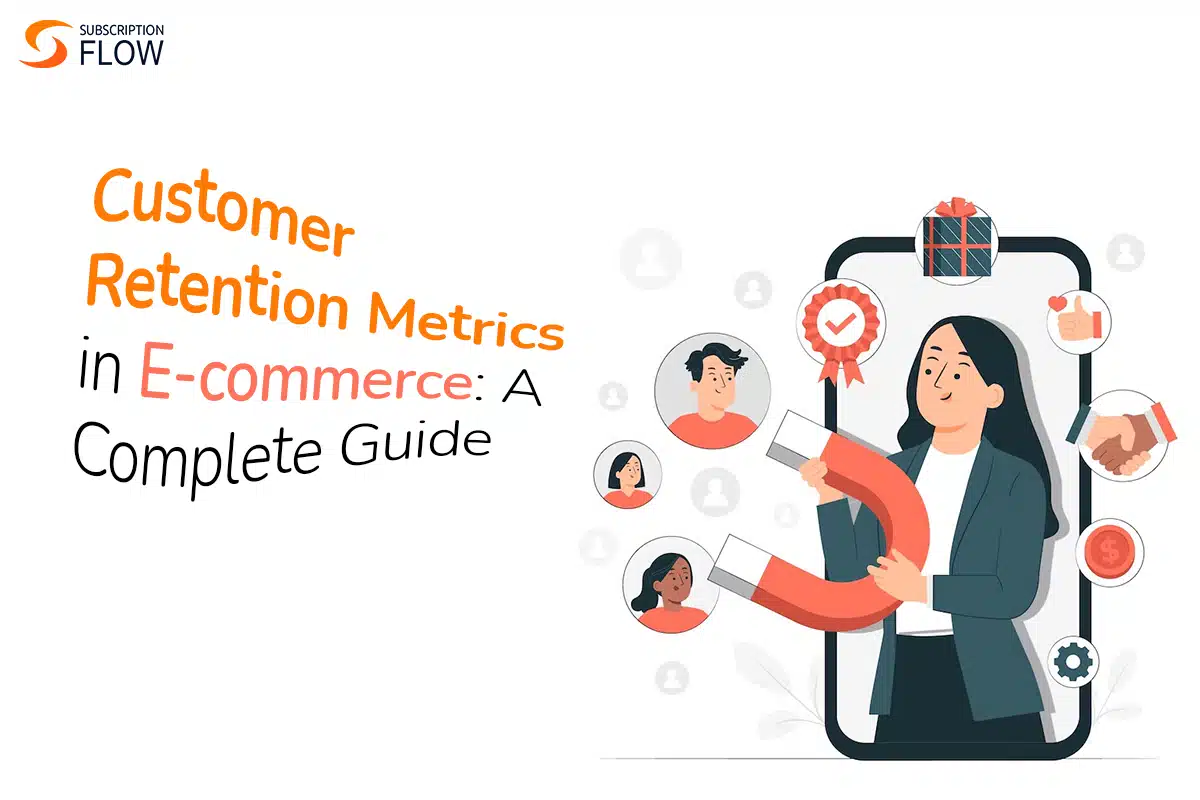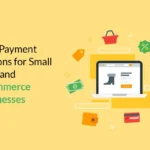
Customer Retention Metrics in E-commerce: A Complete Guide
As an e-commerce business owner, you know the sweat, blood, and tears that go into acquiring new customers to shop at your online store.
The importance of growing customer acquisition as an indicator of business growth is undeniable, but we’re here to talk about a much more frequently neglected strategy of focusing on retaining existing buyers for sustainable revenue growth.
It is much easier and more cost-effective to retain existing customers than to acquire new ones, implying a much greater return on investment (ROI) as you tap into the power of repeat purchases, nurturing customer loyalty and the reoccurring to recurring pipeline.
But how do you track the success of your customer retention efforts? That’s where customer retention metrics in e-Commerce come in.
In this article, we’ll introduce all the major customer retention metrics in e-commerce that you should be tracking to accelerate growth and how to push these KPIs in the right direction.
What are Customer Retention Metrics in eCommerce?
Customer retention metrics refer to the key performance indicators (KPIs) that eCommerce businesses track to determine the percentage of customers who continue to shop with your e-commerce business over a given period.
These metrics help gauge the effectiveness of your customer retention efforts, as well as, identify opportunities to build long-term relationships with buyers to grow revenue sustainably.
Why is it Important to Track eCommerce Customer Retention Metrics?
Tracking customer retention metrics is critical for e-commerce businesses to successfully retain existing buyers. It’s much more cost-effective to keep an existing customer than to acquire a new one, so focusing on customer retention can help cut costs and maximize revenue. Additionally, loyal customers are more likely to make repeat purchases, refer your business to others, and leave positive reviews. This in turn supports customer acquisition efforts in the long run as well.
Customer Retention Metrics for Ecommerce Businesses
Here are the top customer retention metrics you should track for your e-commerce business:
1. Customer Churn Rate (CCR)
Customer Churn Rate (CCR) is possibly the most central parameter to quantifying retention or lack thereof. CCR measures the percentage of customers who have stopped shopping with your e-commerce business over a given period. A high CCR indicates that your customer retention strategies may not be effective, and you need to take action to retain more customers.
The following formula is used to measure churn rate in a given period e.g., month, quarter, year, etc.
2. Customer Retention Rate (RR)
Customer Retention Rate (CRR), as the name implies, demonstrates the percentage of buyers who continue to make purchases from your store in a given period. A high customer retention rate signifies good customer health scores. Healthy customers refer to satisfied customers who want to continue making purchases and are likely to recommend your product/services to others as well.
CRR can be calculated using the following equation,
3. Repeat Purchase (RP)
Repeat Purchase (RP) measures the percentage of customers who have made more than one purchase from your e-commerce business. A high RP indicates that your customers are satisfied with your products and services, and are more likely to make repeat purchases in the future.
The following formula can be used to calculate this metric,
4. Customer Lifetime Value (LTV)
The Customer Lifetime Value (LTV) measures the total amount of money a customer is expected to spend on your e-commerce business over their lifetime. This metric helps you understand the value of a customer and how much you can afford to spend on customer acquisition and retention.
Having said that, this metric is often not as standardized as the others and frequently neglected. In the eCommerce industry, it is typically computed from the following formula:
5. Average Order Value (AOV)
Average Order Value (AOV) measures the average amount of money a customer spends on your e-commerce website per order. A high AOV indicates that your customers are willing to spend more money on your products, which can boost your revenue and profits. The following formula is used,
6. Purchase Frequency (PF)
Purchase frequency (PF) is a metric used in marketing and sales to measure how often customers make purchases from a particular business or brand within a given time frame. It provides insights into customer loyalty and repeat business. It also helps businesses understand the behaviour and preferences of their customers. This metric can be calculated by dividing the total number of purchases made by the total number of unique customers during a specific period of time, such as a month or year. The following formula can be used,
7. Net Promoter Score (NPS)
The Net Promoter Score (NPS) measures the likelihood of customers recommending your e-commerce business to others. Customers are asked to rate on a scale of 0-10 how likely they are to recommend your business to a friend or colleague. A high NPS indicates that your customers are happy with your products and services and are more likely to refer your business to others.
Strategizing when and how to get input from your customers is important to increase the usefulness of this data. Seamlessly incorporating it into their website visit and making it as quick and frictionless as possible, allows you to collect more of this data directly from your shoppers.
NPS can serve as a valuable trigger indicating poor customer experience and revenue leaks. By gauging customer satisfaction, you can quickly recognize when intervention is needed to address any pain points that may be hindering their willingness to shop at your online store.
8. Product Return (PR)
Intuitively, Product Return (PR) refers to the fraction of bought goods that are returned to your business in a given period. The following equation is used to calculate PR,
This metric indicates a problem with the product quality or description painting a false expectation. It can also be due to some other post-purchase customer journey issues including shipping and delivery errors and delays.
How to Improve Customer Retention Metrics in eCommerce
Once you’ve calculated your customer retention rate, the next step is learning how to improve it. Here are some strategies to consider:
Personalize the Shopping Experience
Personalization is a powerful tool for improving customer retention. Through targeted messaging, product recommendations, and other tailored communications to each individual customer, you can build stronger relationships and increase the likelihood of their returning to your store.
Some ways to personalize the shopping experience include:
- Personalized product recommendations based on a customer’s purchase history
- Promotions tailored to customer’s interests or behaviour
- Customer data to personalize email marketing messages
Stellar Customer Service
Providing exceptional customer service is key to improving customer retention. When customers feel valued and appreciated, they’re more likely to return to your store and recommend it to others.
Some ways to provide exceptional customer service include:
- Fast, friendly, and helpful support through multiple channels (such as phone, email, and chat)
- Proactive problem-solving of customer issues before they become major problems
- Artificial serendipity (such as offering unexpected discounts)
Offer Loyalty Programs
Loyalty programs are a proven way to increase customer retention. By offering rewards, discounts, or other incentives to customers who make repeat purchases, you can encourage them to continue shopping with your business.
Some examples of loyalty programs include:
- Points programs, where customers earn points for each purchase that can be redeemed for rewards or discounts
- Tiered programs, where customers earn increasingly valuable rewards or benefits as they make more purchases
- Subscription programs, where customers pay a monthly fee to receive exclusive benefits or discounts
Email Marketing
Email marketing is a cost-effective way to reach out to your customers and keep them engaged with your business. By sending regular newsletters, promotions, and other communications, you can stay top of mind and encourage customers to return to your store.
Some tips for effective email marketing include:
- Customer-segmented email list to send more targeted messages to specific groups
- Eye-catching subject lines and personalization to improve open rates
- Clear calls to action that encourage customers to take action (such as making a purchase or visiting your store)
Conclusion
Customer retention is critical to business success. By tracking customer retention metrics in eCommerce and implementing strategies to improve retention, you can build a loyal customer base that will help drive long-term success. Some key strategies for improving customer retention include personalizing the shopping experience, providing exceptional customer service, offering loyalty programs and using email marketing to stay connected with your customers.
Remember, the goal isn’t just to keep your customers coming back, but to build a relationship that lasts beyond a single transaction. By focusing on building strong customer relationships and providing value beyond just the products you sell, you can create a business that customers will love and return to time and time again.

















